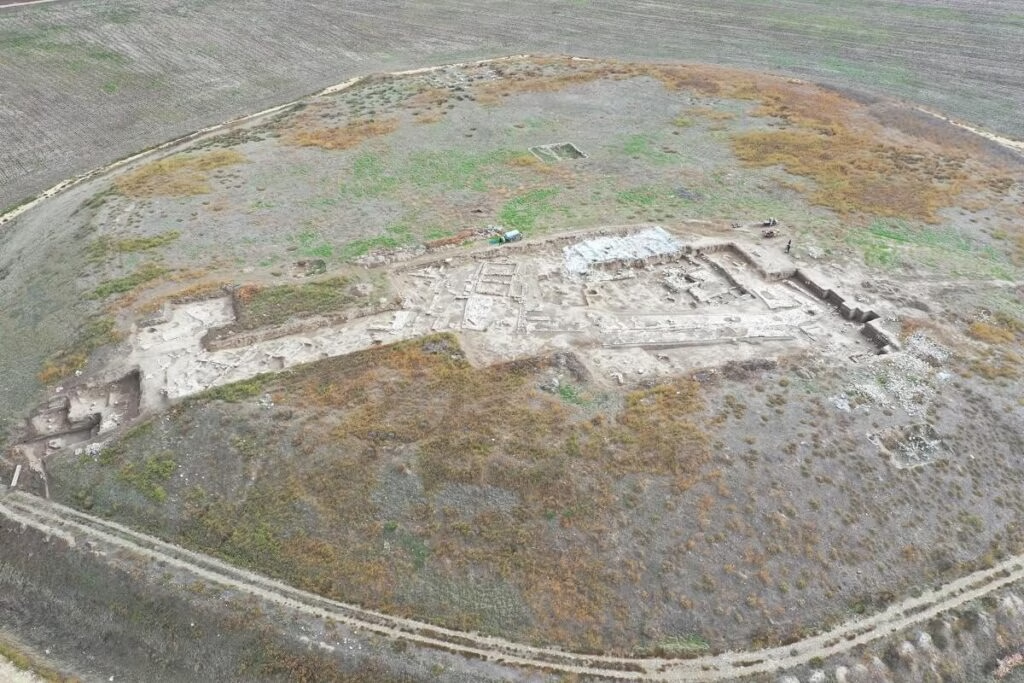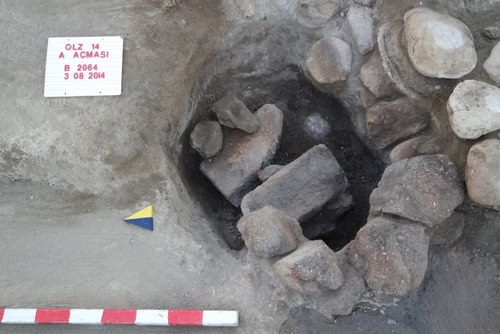Located in northern central Turkey, approximately 25 kilometers west of the modern city of Amasya, Oluz Höyük has become one of the most thought-provoking archaeological sites in Anatolia. For over 15 years, ongoing excavations have revealed a settlement with ten stratified cultural layers—each containing sacred structures. But beyond its historical richness, Oluz Höyük may be home to something far more exceptional: the earliest architectural expression of archaic monotheism in Anatolia.
Ateşgede: A Fire Temple Open to the Sky
One of the most striking discoveries at Oluz Höyük is a fire temple, or “Ateşgede”, dated to ca. 450 BCE. This small building contains a 1.60-meter-wide circular fire pit surrounded by a modest cella. What makes this temple unique is that its roof was deliberately left open—a design decision with both symbolic and practical implications.
According to archaeologist Prof. Dr. Şevket Dönmez, the open roof allowed the sacred fire—likely perceived as eternal—to remain visible at all times. More importantly, it allowed the voice of the Magus (Mog), a ritual priest who recited prayers for hours beside the fire, to be heard across the temple grounds. Remnants of ash, soot, and carbon deposits around the pit confirm that this was not a common hearth, but a ritual fire of continuous significance.

Two Spaces, One Belief: Temple and Worship Hall Separated
Another key architectural distinction revealed by the excavations is the separation between the fire temple and the main worship area. While the fire burned in a smaller open-air chamber, the actual space of congregation and prayer was significantly larger—measuring over 100 square meters and supported by at least six sandstone column bases.
This larger structure likely had a roof supported by the columns, covering all but its southern side, where light and sound could interact with the open sky and fire. Such a layout is not just functional but reflects a structured, community-based religious practice—a sign of emerging institutional belief.
The Sunrise and the Sacred: Evidence of the Havangah Prayer
In early Zoroastrianism, practitioners pray five times a day, each prayer corresponding to a specific time segment. The first is Havangah, performed from sunrise until noon.

What makes the Oluz Höyük worship area remarkable is that it was oriented in such a way that the sunrise and the sacred fire could be viewed simultaneously—a strong indication that the Havangah prayer was performed here. This connection between cosmic elements (the sun), earthly fire, and structured prayer points to a belief system in which light symbolized divine presence.
Zoroastrian Influence or Anatolian Monotheism?
The structures and rituals discovered at Oluz Höyük clearly align with Zoroastrian practices: fire worship, daily prayer cycles, priesthood, and sacred architecture. However, researchers argue that the religious system in place during the 5th century BCE may represent an even earlier stage—a proto-monotheistic tradition not yet bound by the rigid dogmas of later Zoroastrian orthodoxy.
Key features suggest this interpretation:
- Absence of anthropomorphic deities or idols
- Emphasis on fire and light as divine symbols, not gods themselves
- Distinct separation of ritual and communal functions in temple design
- Architectural orientation tied to celestial cycles
This may indicate that Oluz Höyük housed a localized form of early monotheism, perhaps influenced by but not identical to Persian Zoroastrianism.
New Chapter in the Religious History of Anatolia
Historically, the religious landscape of ancient Anatolia has often been understood through a polytheistic lens, shaped by Hittite, Greek, and Roman pantheons. But Oluz Höyük challenges this narrative. It introduces us to a spiritual tradition that emphasized a singular, formless divinity symbolized through fire and light.
If these interpretations hold, then Oluz Höyük may be:
- The earliest known monotheistic temple site in Anatolia
- A physical manifestation of an evolving divine concept—from many gods to one transcendent force
- A meeting point of cosmic order, ritual practice, and sacred architecture
Conclusion: In the Light of Fire, a Silent Revolution
Today, walking across the remains of Oluz Höyük, one encounters more than just stones and ash. One hears echoes of whispered prayers, feels the warmth of a fire that never dies, and stands where the sun once rose to meet the divine.
“Here in Anatolia, God was silent. But He spoke through fire, through light, and through the sky.”
Cover Image Credit: Courtesy of Prof. Dr Şevket Dönmez, head of Oluz Höyük excavation.





